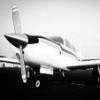LOP potential problem
-
Members Online
- jsclafani
- 201Mooniac
- Sabremech
- jpmenuez
- Jack Burson
- ta2too
- Raymond J1
- exM20K
- toto
- natdm
- Oscar Avalle
- BradKratz
- mluvara
- acekng1
- Thom
- Skyland
- Falcon Man
- hypertech
- hazek
- Jeff_S
- TCC
- Greg Ellis
- varlajo
- M20F
- akb3
- Justin Schmidt
- takair
- Rusty Pilot
- Stephen Tschirhart
- rahill
- DCarlton
- LOCOLJ
- PeytonM
- TangoTango
- Ron McBride
- KSMooniac
- Jarerh
- tammy


Recommended Posts
Join the conversation
You can post now and register later. If you have an account, sign in now to post with your account.